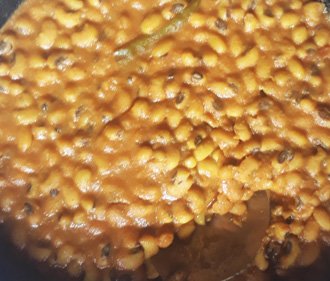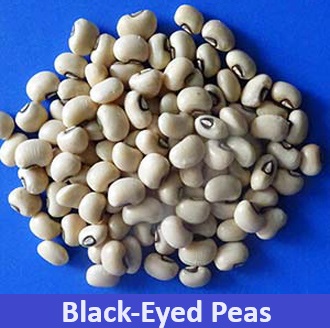Selection and storage
Immature, whole, and shelled cowpeas are suitable for consumption as vegetables. Canned and whole dry beans are conveniently accessible at grocery stores and markets.
When selecting, opt for completely dried and intact seeds packaged in bags. Avoid beans that show signs of insect damage, slits, breakage, or mold.
For storage, transfer whole dry beans to plastic or steel containers, keeping them away from moisture and heat. Whole beans can maintain their quality for several months.
Treat green cowpea pods and shelled beans akin to
, following the same handling guidelines.
Preparation and serving methods
 |
| Black eyed pea stew. |
The raw, green pods of black-eyed peas are edible before they are fully mature and are often served as a green vegetable. The leaves, shoots and tendrils are also used like .
Although soaking is not mandatory for cowpeas, it quickens overall cooking time, removes anti-nutritional compounds, and enriches the flavor. Soaking in cold water for 3-4 hours is sufficient. Whole beans may take about one hour to cook. Pressure cook for 10 min with soaking; 10-20 min without soaking.
Avoid overcooking which turns them into mashed.
Black-eyed peas can also be used in soups and salads, cooked in patties, or slow-cooked. They are made into a puree or sprouted.
The young, green pods of black-eyed peas are edible even before reaching full maturity and are commonly enjoyed as a green vegetable. Similarly, their leaves, shoots, and tendrils serve as alternatives to spinach.
While soaking isn’t obligatory for cowpeas, it accelerates cooking time, eliminates anti-nutritional compounds, and enhances flavor. A soak in cold water for 3-4 hours suffices. Whole beans typically require around an hour to cook, but pressure cooking for 10 minutes after soaking or 10-20 minutes without soaking is also effective. Caution should be taken to avoid overcooking, which can result in a mushy texture.
Black-eyed peas are versatile and can be incorporated into soups, salads, patties, or slow-cooked dishes. They can be pureed or sprouted as well.
Here are some serving tips:
-
In Southern cuisine, cowpeas are essential in the traditional New Year’s Day dish known as southern black-eyed pea recipe, typically cooked with ham hocks, , , and garnished with .
-
Across West Africa, soaked and hulled black-eyed peas are transformed into a variety of tantalizing dishes. Cowpea fritters, known as akara, are popular, often served with Tomato Sauce (Akaraje in Brazil, sometimes with shrimp and filling), while red cowpeas stew is a beloved classic in Nigeria and Ghana.
-
In Turkey, cowpeas are cooked with and urfa pepper, creating a flavorful dish typically served alongside rice.
-
Middle Eastern cuisine incorporates baked black-eyed beans into dishes like Bean Salad, adding a unique touch to the culinary landscape.
-
In the Indian subcontinent, known as lobia, cowpeas are a dietary staple, featuring prominently in stews and sabzi, reflecting the diverse culinary traditions of India and Pakistan.
Safety profile
Unlike Adzuki kidney beans, consuming raw cowpeas does not result in poisoning from phyto-hemagglutinin (lectin) toxin, a condition that can lead to the clumping of red blood cells in humans. However, boiling cowpeas neutralizes other antinutrient compounds like trypsin and improves digestibility.
You may also like to read≻≻-
≻≻-Back to . Visit here for an impressive list of vegetables with complete illustrations of their nutrition facts and
health benefits.
≻≻-Back to .
Further Reading:
-
Fieldbean- -pdf.
